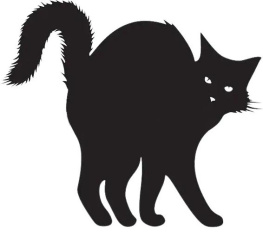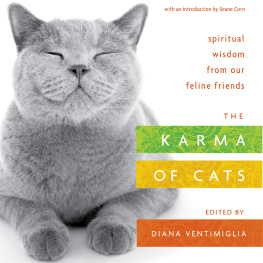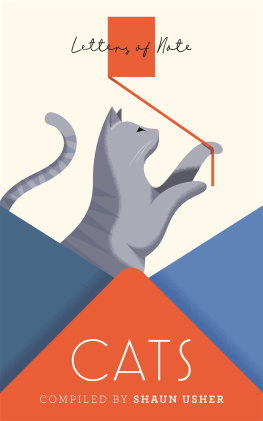Library of Congress Cataloging-in-Publication Data
Names: Gavan, Peggy, author.
Title: The cat men of Gotham : tales of feline friendships in old New York / Peggy Gavan.
Description: New Brunswick : Rutgers University Press, 2019. | Includes index.
Identifiers: LCCN 2018033646 | ISBN 9781978800229 (cloth) | ISBN 9781978800236 (ebook)
Subjects: LCSH: Cat rescueNew York (State)New YorkHistory. | Animal welfareNew York (State)New YorkHistory. | CatsNew York (State)New YorkHistory.
Classification: LCC HV4766.N49 G38 2019 | DDC 636.8/083209227471dc23
LC record available at https://lccn.loc.gov/2018033646
A British Cataloging-in-Publication record for this book is available from the British Library.
Copyright 2019 by Peggy Gavan
All rights reserved
No part of this book may be reproduced or utilized in any form or by any means, electronic or mechanical, or by any information storage and retrieval system, without written permission from the publisher. Please contact Rutgers University Press, 106 Somerset Street, New Brunswick, NJ 08901. The only exception to this prohibition is fair use as defined by U.S. copyright law.
The paper used in this publication meets the requirements of the American National Standard for Information SciencesPermanence of Paper for Printed Library Materials, ANSI Z39.48-1992.
www.rutgersuniversitypress.org
Manufactured in the United States of America
During the nineteenth and early twentieth centuries, feline adventures ranging from the dramatic to the absurd were as popular in newspapers as they are on the internet today. Many reporters attributed anthropomorphic traits to the cats, which is reflected in some of the direct quotes I have selected for the stories in the following nine cat-lives chapters. Although most of the news articles were intended to make readers chuckle, horrific tales of cruelty were also reported in detail. Not only were stray cats sent to the gas chambers by the thousands every year and disposed of in street gutters, but they also faced danger in the form of callous children, misguided citizens, and heartless entrepreneurs on a daily basis. Even the citys street commissioners made light of the wretched situation with a tongue-in-cheek article in the New York Daily Graphic titled Hints for Spring Gardening, which suggested that old boots, hats, crockery, tin cans, ashes, dead cats, and potato parings should be sown broadcast in many streets, which are now in splendid order for planting. I share the following true accounts from newspaper archives not to shock or dishearten my readers but to provide a social and historical backdrop against which to better appreciate the simple acts of kindness and compassion that a few special men bestowed on the felines featured in this compilation of cat tales of Old New York.
* * *
In 1890, five women in Manhattans Washington Heights neighborhood formed the Society to Befriend Domestic Animals (SBDA). The mission of the SBDA was to provide food and shelter for homeless and maltreated animals and to secure painless death for animals rendered decrepit by accident or incurable ailment. In addition to caring for numerous cats and a few dogs in the home for wayward animals on West 185th Street, they organized a band of female volunteers who fed about two thousand stray cats a week. Unfortunately, several of these Florence Nightingales for felines became Jack the Rippers. Instead of feeding the cats, they lured them with catnip and killed them with chloroform. In this manner, the women killed about fifty cats a night. Eventually, the ladies of the Midnight Band of Mercy were arrested and prosecuted by the American Society for the Prevention of Cruelty to Animals (usually referred to as the SPCA by the New York press), but not before they had killed more than three thousand cats.
In 1894, the SPCA agreed to take over the care and control of New York Citys cats and dogs. To empower the SPCA with this authority, the New York State Legislature passed a law titled An Act for the Better Protection of Lost and Strayed Animals, and for Securing the Rights of the Owners Thereof. According to the law, any cat or dog found within the city limits without a collar bearing its name and owners address could be seized and destroyed or otherwise disposed of if not redeemed within forty-eight hours. Shelter officials insisted that the doomed animals were treated kindly before they were humanely destroyed and therefore had a happy 48 hours if they had never known happiness before. The fee for redeeming a cat or dog was three dollars, which was a steep price that many New Yorkers were unable to pay. Consequently, countless loved pets were seized and destroyed.
Although the primary intention of the law was to abolish the use of dog catcherswho were often crooked and cruel and took pet dogs by force or theftit was also enacted to help control the citys feline population. In summarizing the law, the New York Times said, Every cat without a collar will be regarded as a tramp, and, although the cat catchers will not chase collarless tramp caterwaulers over back fences, they will find other means of getting them into their toils. The worthless animals will be put to death in as humane a manner as possible. Gas will be used to destroy them. When asked how the agents would catch collarless cats, John P. Haines, president of the citys SPCA, replied, To catch these cats we shall rely upon the co-operation of our good citizens. For example, if a housewife knows of a homeless cat she can easily get it to come to her house or rooms by putting milk or other food in its way, and then catch it and put it into a basket. Then she can send us a postal card, and one of our men will be sent for the cat. By the end of 1899, 164,626 dogs and 315,645 cats had reportedly met their demise courtesy of the SPCA.
In the late nineteenth century, the furs of skunks, dogs, and cats were popular because they were durable and fairly inexpensive. One New York Times reporter noted that with cat skins selling for up to two dollars, trappers and hunters might find profitable employment in the city back yards as well as the northern wilds. Brooklyn resident Herman Fritsch was just one of several New Yorkers who tried to take advantage of this employment opportunity. In 1895, he paid boys to collect stray cats, which he then killed by hanging inside his house. Hed skin the cats and bring the carcasses to saloon keepers and housewives in Williamsburg (who thought they were buying rabbit meat). Fritsch was able to get away with this atrocity for a few months until a large orange tabby broke free from the noose. The cat caused a commotion, which prompted neighbors to call the police. By the time the officers arrived, Fritsch had already recaptured and killed the cat. Fritsch said he didnt know it was illegal to kill cats in order to make a living. He was arrested and held on $200 bail pending charges from the SPCA. Oh, the irony!
During the summer of 1916, a polio epidemic caused widespread panic throughout the city. Movie theaters and libraries were closed, meetings and public gatherings were canceled, and children were kept from parks, pools, and beaches. Many people, wrongly convinced that cats and dogs were responsible for spreading the disease, released their pets to the streets. SPCA Superintendent Thomas F. Freel tried to convince the public that pets did not spread infantile paralysis, but his words fell on deaf ears. By the end of July, more than eight thousand dogs and seventy-two thousand cats had been disposed of in the societys gas chambers. Freel told the







